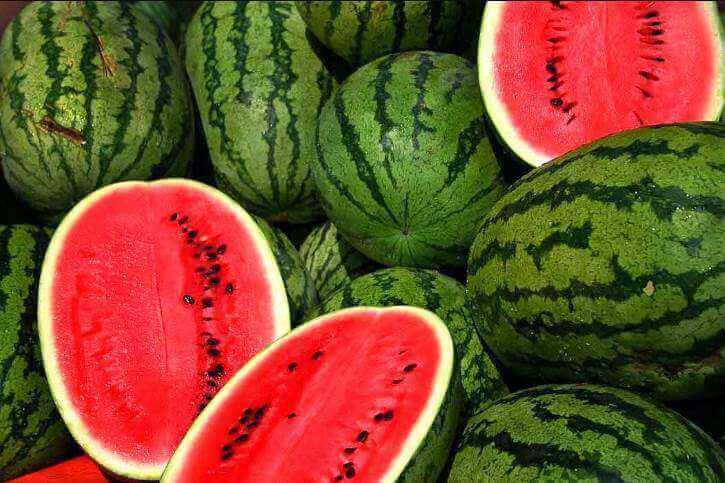Yam is believed to have originated from Africa, Asia, and the Caribbean. It is often referred to as “nyami” by some Africans, which is where the word ‘yam’ was derived. In some parts of the world, yam and potato are often grouped, and it is often misleading that even today, some people still refer to sweet potato as yam.
Yam is a major food product in Africa.
In Nigeria, yam is considered a very important food product, and it is being cultivated both for personal consumption (subsistence farming) and commercial production. Most families have spaces in their home gardens where yams are grown and barns for storage. Yam can be used for different foods and can be eaten as boiled, roasted, porridge, or even compliment other delicacies. Many people even use it to prepare swallows in the form of pounded yams.
Yam farming is a very lucrative business in Nigeria as a lot of families consume yams as their primary food, but most people fail to recognize this. Though the business appears laborious, investing in yam farming wouldn’t be a total waste of time as long as you do it the right way and at the right time.
The rising population of Nigeria and the need to ensure food security make yam cultivation a very important business to venture into. Moreover, this is a business that many people have neglected because it does not fit into their ‘white-collar industry’.
Nigeria is known to be the highest cultivator of yam globally, while Ghana is the highest exporter of yam in the world. This means that Nigerian farmers are not cultivating enough in Nigeria to satisfy the local consumers and have sufficient yam products for exports.
This article will elaborate on ‘HOW TO START A YAM FARMING BUSINESS IN NIGERIA‘. I will guide you on the step-by-step process to follow if you intend to start a yam business in Nigeria.
Table of Contents
How To Start Yam Farming Business In Nigeria

Yam is a root and tuber crop, and it is mostly cultivated in West Africa. West Africa contributes to about 90% of the world yam production, and Nigeria is responsible for about 68% of the total production. Yam belongs to the family Discorecoceae, and it has different varieties or cultivars which include:
- Discorea alata (Water Yam).
- Discorea builfera (Aerial Yam).
- Discorea dumentorum (Sweet Yam).
- Discorea rotunda (White Yam).
- Discorea cayenesis (Yellow Yam).
Below are step by step procedures for starting a yam farming business in Nigeria
1. Land Acquisition
The first step in the yam farming business is the acquisition of land. Commercial farming requires a lot of land, and cultivating yam for monumental commercial purposes means you need to have a large hectare of land for use. However, depending on your budget, get well-drained land that is not waterlogged.
The size should be sufficient for the quantity of yam you intend to cultivate and proper plant spacing. Lands can either be bought, rented, or leased. Ensure to acquire written agreements for the land to avoid future problems. Lands should also be free from cattle herders and should be well secured to prevent theft.
added during this time to ensure the massive growth of yam tubers. Cow dung and other compost can be used as manure for yam production.
2. Land Preparation
After the land acquisition, the next step is land preparation. For small-scale farming, land preparation requires hoes and cutlass to clear the bushes and weeds. For commercial farms, this stage is done mechanically using the ploughs (plows) and harrows.
Clearing the bushes is best done during the dry season. This will allow the weeds to dry up with the soil, which will form organic manure. The process of doing this is what is referred to as mulching.
This will help to improve soil moisture and make more favorable conditions for plant growth. Heaps and ridge beds should be prepared after the land is cleared. The ridges should be made while considering the land’s contour to avoid erosion.
3. Yam Sett Preparation
Setts are referred to as yam seeds that have been cut for planting. They are whole tubers that are being cut into different sizes. The yam setts should be taken from healthy and disease-free tubers, and as a rule, the bigger setts should be used because it tends to yield better yam sizes on harvest, but the setts should not be made to be too big to avoid waste of tubers.
Preparation of the yam sett is the application of fungicide, insecticides, and ash to the yam seeds. This is being done to prevent microbes from attacking the yam when planted. The ash also makes the soil to be alkaline. Preparation of sett should be done just before the rainy season.
4. Planting the Yam Sett
Yam is best planted during the rainy season. However, most yam varieties are planted between March and April. One hectare of land can contain up to 15,000 to 20,000 setts. The early planting season is between October and November, while the late planting season is between March and April.
The recommended spacing of yams for commercial yam production is 1m × 1m between rows and stands, respectively. Ensure that you have enough room to accommodate the setts that you’ll be planting. Large tubers need a lot of space to grow, as do the vines of the plants, which thrive.
5. Weeding, Staking, and Manure Addition
This is the next thing to be done after planting the yam sett. Weeding is an essential practice that is carried out regularly on the farm to avoid unwanted plants struggling for nutrients with the yam seedling. Weeding can be done 3 to 4 times, depending on growth. While weeding, ensure to cover exposed tubers.
Staking is done using bamboo sticks or ropes. This is carried out to ensure that the yam gets sufficient sunlight which is very important for its growth. Manure is also being added during this time to ensure the massive growth of yam tubers. Cow dung and other compost can be used as manure for yam production.
6. Harvesting and Sales
Harvesting of yam is done when the yam reaches maturity. Depending on the variety, yams are harvested 6 to 12 months after planting. Lift the tubers when the leaves and stems turn yellow and dry. Do not leave the ripe tubers too long in the ground.
Otherwise, they become bitter and may rot. At the first harvest, after six months, the biggest tubers are lifted. The second harvest is taken 3 to 6 months after the first crops may be harvested as and when needed.
Yams are taken to the nearest market for sales. The Price of yam is dependent on the size of the tubers.
Cost Of Starting A Yam Farming Business In Nigeria.
The cost of yam farming in Nigeria is most dependent on the farm’s location due to the cost of land acquisition. Other costs include hiring laborers, cost of fumigation, cost of transportation for harvested yams, cost of seeds, etc.
On average, outside the cost of land, yam farming can be done with 300,000 naira to 500,000 naira for a start. Yam farming is a very lucrative business, and if you have sufficient farmland, you can make so much money from it.
This step-by-step guide will help you in starting a yam business successfully in Nigeria. First, however, you can contact an agricultural consultant to guide you deeply on yarm farming.





